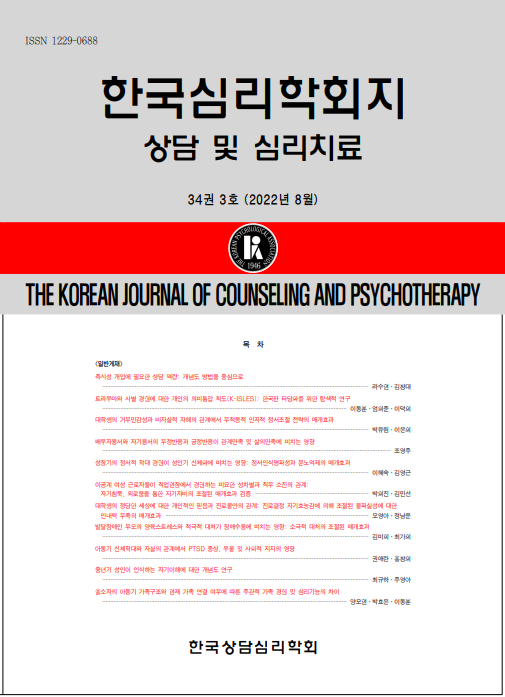open access
메뉴
open access
메뉴 ISSN : 1229-0688
ISSN : 1229-0688
The purpose of the present study is to validate the Korean version of the Session Evaluation Questionnaire (SEQ), originally developed by Stiles & Snow (1984, 1989). The data were gathered at the Student Counseling Centers of five universities in Korea. From total number of 165 sessions, 108 sessions (10 counselors' s and 28 clients' s sessions) were analyzed. The results of this study were as follows : First, factor analyses were conducted on residual correlation matrices after the main effect of dyads (counselor-client pairs) had been removed. The results showed two distinct factors, called depth and smoothness at session evaluation part, and two distinct factors, called positivity and arousal at post-session affect part. At session evaluation part, however, depth was considered as first factor to counselors, smoothness to clients. A comparison of factor structures between the original SEQ form 4 and the Korean version revealed the same but an omission of one item from the arousal dimension. Second, component-of-variance analyses showed that session-to-session variance was much greater than the counselor or counselor-client dyad variance. These results suggest that the SEQ measures some changes that take place in counseling session rather than characteristics of counselors or clients. Third, correlational analyses were conducted on the residuals after removal of the main effect of counselor-client dyads. In each SEQ scales comparisons, depth and smoothness may not be distinct factors, especially for clients. It was also found that c아inselor and client interpreted arousal in different way. Counselors and clients were found to agree on depth, smoothness, positivity, except arousal. Counselor s perceptions of post-session positivity were significantly correlated with the three client's SEQ indexes except arousal. In other words, counselors' post-session positive mood were moderately predictive of client reactions.
